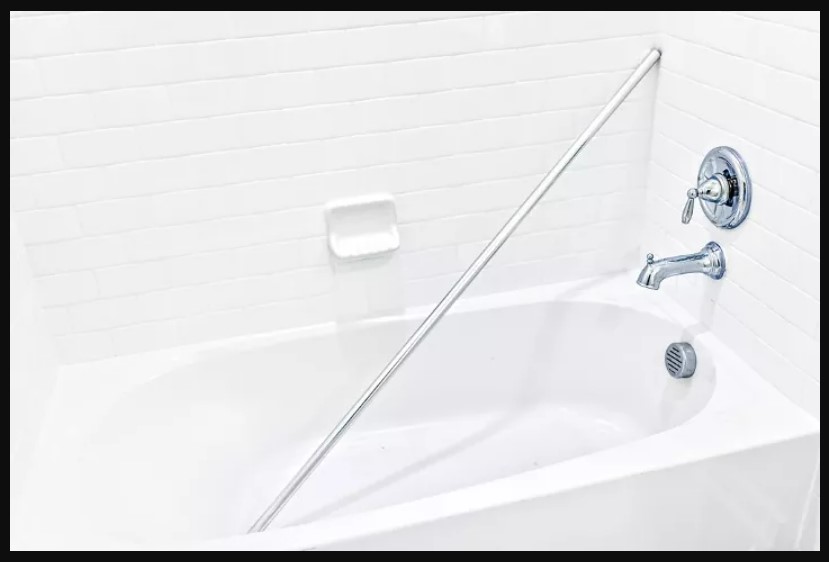Does My Landlord Have To Reglaze My Tub? All You Need To Know
Whether your landlord must reglaze your tub depends on factors like lease terms, initial condition, and local laws. If the tub deteriorates from normal use, the landlord might be responsible. However, if the damage is due to tenant actions, responsibility could shift. Check lease and laws for clarity.
Living in a rented space comes with certain responsibilities and rights for both tenants and landlords. One common query that arises among renters is whether their landlord is obligated to repair a faulty bathtub. Let’s dive deeper into this topic in a way that’s easy to understand.
Table of Contents
Does My Landlord Have To Reglaze My Tub? What to consider?

Checking the Initial Condition:
Start by recalling the state of the bathtub when you first moved in. Was it in good shape back then? If it was, and it’s now showing signs of wear and tear, your landlord might not be required to fix it. Regular usage over time is something tenants generally need to account for.
The Lease Agreement:
When you rented the place, you likely signed a document known as a lease agreement. This agreement outlines the rules and responsibilities for both you and your landlord.
Sometimes, the lease explicitly states that the landlord is responsible for fixing things like the bathtub. If your lease mentions this and your bathtub needs attention, your landlord may indeed be obligated to address the issue.
Local Laws and Regulations:
Different regions have different laws about renting properties. Some places enforce rules that require landlords to maintain their properties in a livable condition.
If your bathtub’s condition renders the property uninhabitable or poses health hazards, your landlord might be legally bound to resolve the problem.
When It’s Not Your Fault:
If the bathtub damage is due to something you did, like using harsh cleaning agents that harmed the surface, the responsibility might fall on you. But if the problem arises from normal use or age-related deterioration, your landlord is more likely to bear the responsibility for the repair.
- Age of the Bathtub
Take into account the age of the bathtub. If it’s quite old, it might not be worth investing in repairs. Sometimes, replacing an aged bathtub might make more financial sense.
- Cost Analysis
Bathtub repairs can be expensive. Before asking your landlord to undertake repairs, weigh the cost against the benefits, especially if the bathtub is considerably worn out.
- Broader Bathroom Condition
Evaluate the overall state of the bathroom. If the bathtub is the sole issue and the rest of the bathroom is in good condition, repairing the bathtub could be a viable option.
However, if other fixtures also require attention, addressing all the issues together might be more practical.
Why Effective Communication is important in this case?

Initiating a respectful and open conversation with your landlord is essential. If you believe the bathtub needs fixing, share your concerns and provide evidence of the issue.
Collaborative discussions often lead to mutually satisfactory resolutions that align with both parties’ rights and responsibilities.
Getting Professional Advice
If you’re unsure about your rights as a tenant or your landlord’s responsibilities, seeking expert advice is wise. Consult with tenant advocacy groups, housing authorities, or legal professionals who can provide clear guidance tailored to your situation.
How to Reset a Well Pump Pressure Switch Without a Lever?
plumbinsight.com
Is bathtub reglazing a good idea?
Bathtub reglazing can be a smart choice under certain circumstances. If your bathtub is showing signs of wear, has minor surface damage, or has lost its shine, reglazing can give it a fresh, like-new appearance.
It’s a more cost-effective option compared to full replacement and can extend the tub’s life. However, if the tub has extensive damage or is very old, replacement might be a better long-term solution.
Consider factors like your budget, the tub’s condition, and your future plans for the property to determine if reglazing is a good idea for your situation.
What are the cons of reglazing a tub?
While reglazing a bathtub offers benefits, it also comes with a few drawbacks to consider:
Temporary Solution: Reglazing provides a cosmetic fix and doesn’t address underlying structural issues. If the tub has significant cracks or structural problems, reglazing may not be a lasting solution.
Durability: Reglazing is not as durable as the original surface. It can chip or peel over time, especially if the surface is exposed to harsh chemicals or abrasive cleaning methods.
Limited Repairs: Reglazing won’t fix major damages or deep cracks. If your tub has substantial damage, reglazing may not effectively cover these issues.
Smell and Fumes: The reglazing process involves strong chemicals, and the fumes can be unpleasant and even harmful if not properly ventilated. It’s essential to ensure proper ventilation during and after the process.
Preparation and Downtime: Reglazing requires thorough cleaning, stripping, and preparation of the tub before applying the new surface. This process can take time and may disrupt your bathroom usage.
Cost: While generally cheaper than replacement, reglazing can still be relatively expensive. If the tub’s condition is poor or it requires additional repairs, the overall cost might increase.
Before deciding to reglaze your tub, weigh these drawbacks against the benefits. If your tub has significant damage or you’re seeking a long-term solution, replacement might be a better investment. Consulting with professionals and considering your budget, usage patterns, and future plans will help you make an informed choice.
Conclusion
In the query of whether your landlord must repair your bathtub, factors such as your lease terms, local regulations, and the bathtub’s condition come into play. Understanding these aspects will enable you to make an informed decision and engage in productive discussions with your landlord. Remember, clear communication and a cooperative approach often lead to the best outcomes for everyone involved.
Thermal Expansion Relief Valve Vs. Expansion Tank; A Full Comparison
plumbinsight.com


